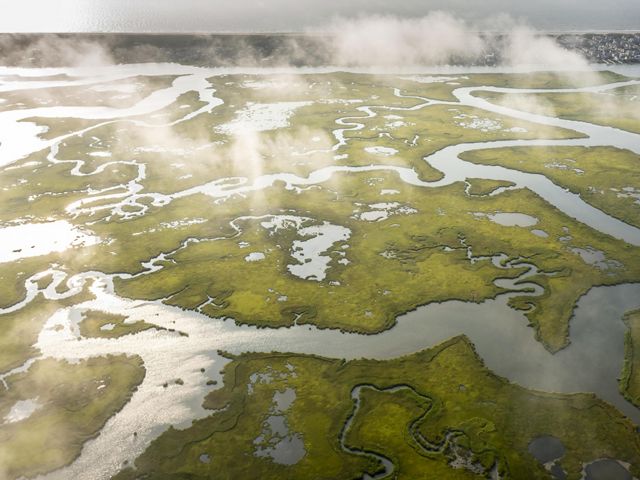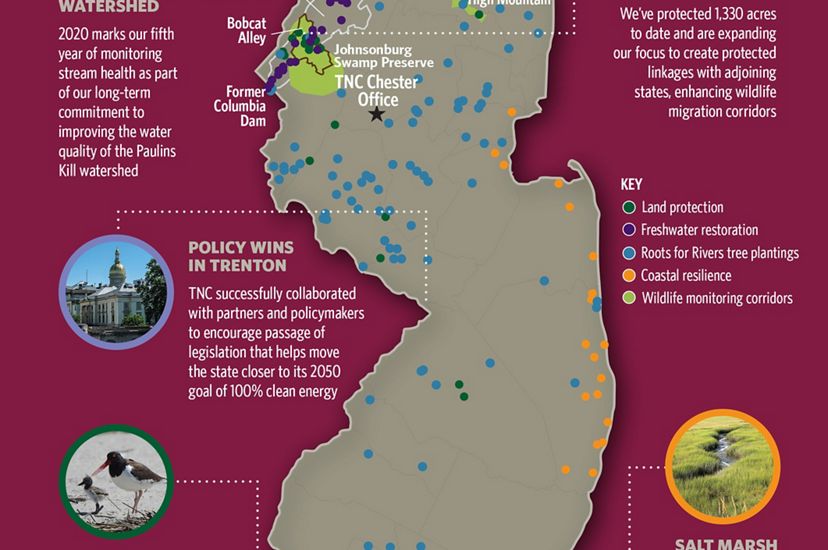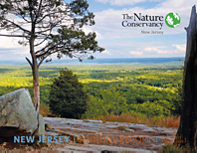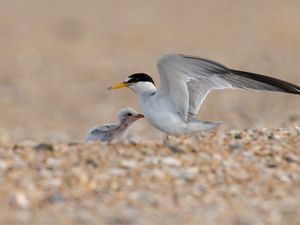
From the Director
As you read about the conservation accomplishments that your generous support made possible, I hope that you are inspired by how these projects are making tangible progress toward tackling the interconnected biodiversity and climate crises. Yes, biodiversity loss and climate change are dire challenges. But we have the science, the tools, and the partnerships to create solutions. Importantly, we are not working alone; we work in concert with local communities, we collaborate with other organizations and government agencies, and we are part of regionwide efforts to achieve large-scale impact.
The chapter’s land protection priority, Bobcat Alley, is a critical link in the Appalachian natural highway, a resilient, connected corridor that allows species to migrate northward and to higher elevations as temperatures warm. And, in addition to protecting habitat and species, safeguarding forested lands in Bobcat Alley also stores carbon. Our efforts to help people on the front lines of the climate crisis, whether they live along the Jersey Shore or in densely populated cities, use nature-based solutions designed to abate climate impacts like flooding and poor air quality. These techniques also benefit biodiversity by restoring coastal habitat and increasing green space in cities.
Thank you! Our work – work that addresses both biodiversity loss and climate change, work that touches down in our home state and extends beyond our borders, work that benefits from and contributes to a wide variety of partnerships – is made possible by you and others dedicated to conservation. Together, we are making New Jersey a place for people and nature to thrive!
Yours in conservation,
Dr. Barbara Brummer

Stay connected for the latest news from nature.
Get global conservation stories, news and local opportunities near you. Check out a sample Nature News email.
Lands
Bobcat Alley and Beyond
New Jersey’s real estate market has been booming since the pandemic began, particularly residential housing. But we can’t forget that our wildlife populations also need places to call home. Enter Bobcat Alley: a 32,000-acre corridor connecting the Highlands to the Appalachian range at Kittatinny Ridge. As our climate continues to warm, species like bobcats migrating northward need Bobcat Alley – and its connection to the 2,000-mile Appalachian greenway stretching from northern Alabama into Canada – more than ever.
The Nature Conservancy and our partners have protected 1,540 acres in Bobcat Alley thus far, and we are working with local organizations like the Land Conservancy of New Jersey and the Ridge and Valley Conservancy on new acquisitions that will protect more land in this vital corridor.
Bobcat Alley doesn’t just benefit wild creatures, but people too. Its protection helps improve water quality in key Delaware River tributaries like the Paulins Kill and adds to popular Sussex and Warren County hiking trails. Stay tuned for some exciting announcements over the year ahead!

Rivers
A New River
As we continue our long-term effort to restore the health of the entire Paulins Kill watershed, The Nature Conservancy has also set our sights on the Delaware River tributary just downstream of the Paulins Kill: the Pequest River. TNC is working with two private landowners and the state’s Division of Fish and Wildlife to lead the design, engineering, and permit submission to remove the Upper and Lower E.R. Collins Dams on the Pequest River in the center of Belvidere. Houses and commercial buildings back right up to the river, and the dams exacerbate flooding with every severe storm. Removing the dams will reconnect three miles of river to the Delaware and help to minimize flooding, benefitting the community as well as fish and other aquatic species. Conducting the pre-removal work for both dams simultaneously will provide significant cost savings.
We are also looking upriver to two smaller, privately owned dams on the Pequest. Our goal there is to work with small business contractors to help them gain dam removal experience, building capacity to remove more and more dams.

Climate
Marsh Restoration Momentum
Healthy marshes can play a powerful part in helping coastal communities adapt to rising sea levels and more intense storms, so TNC continues to take a multi-pronged approach to advancing this nature-based solution to climate impacts. Over the last year, we built momentum for improved salt marsh management through pilot projects, learning exchanges, and coalition building. Results from the beneficial use pilot projects where TNC, together with the NJ Department of Environmental Protection and the Army Corps of Engineers, raised marsh elevation with dredge sediment at Avalon, Fortescue and Ring Island will be presented at a national conference in 2023. More than 150 representatives from state and federal agencies, conservation organizations, and engineering and consulting firms from northeastern and Mid-Atlantic states have participated in the TNC-led Beneficial Use Learning Network’s bi-monthly webinars. Through the Network, restoration practitioners, regulators and dredging experts sit down at a virtual table to collaborate on viable marsh restoration techniques.

Greening Our Cities
Project Greenprint and Planting Trees for a Healthier Newark
Trees provide many benefits: they filter our air and water, absorb carbon dioxide to help mitigate climate change, and boost our mental health. Their shade also cools surface temperatures, which is especially important in cities; neighborhoods with lots of pavement absorb more heat and can be 5 to 8 degrees hotter than surrounding areas.
The City of Newark recognizes that its neighborhoods need more trees to clean and cool the air and wants to be strategic in planting trees where they are needed most. The Nature Conservancy and Rowan University have been working with the City for the last two years to develop the Newark Greenprint, a mapping platform that incorporates data on parks and green spaces, waterways, flooding, community health, and more – including tree canopy cover. At the City’s request, we have gathered additional tree data to incorporate into the Greenprint, and we are now identifying locations for the first 200 street trees that we will plant this fall: 100 provided by the City and an additional 100 by TNC. But that’s just the beginning!





.jpg?crop=228%2C0%2C3542%2C2657&wid=300&hei=225&scl=11.80888888888889)
